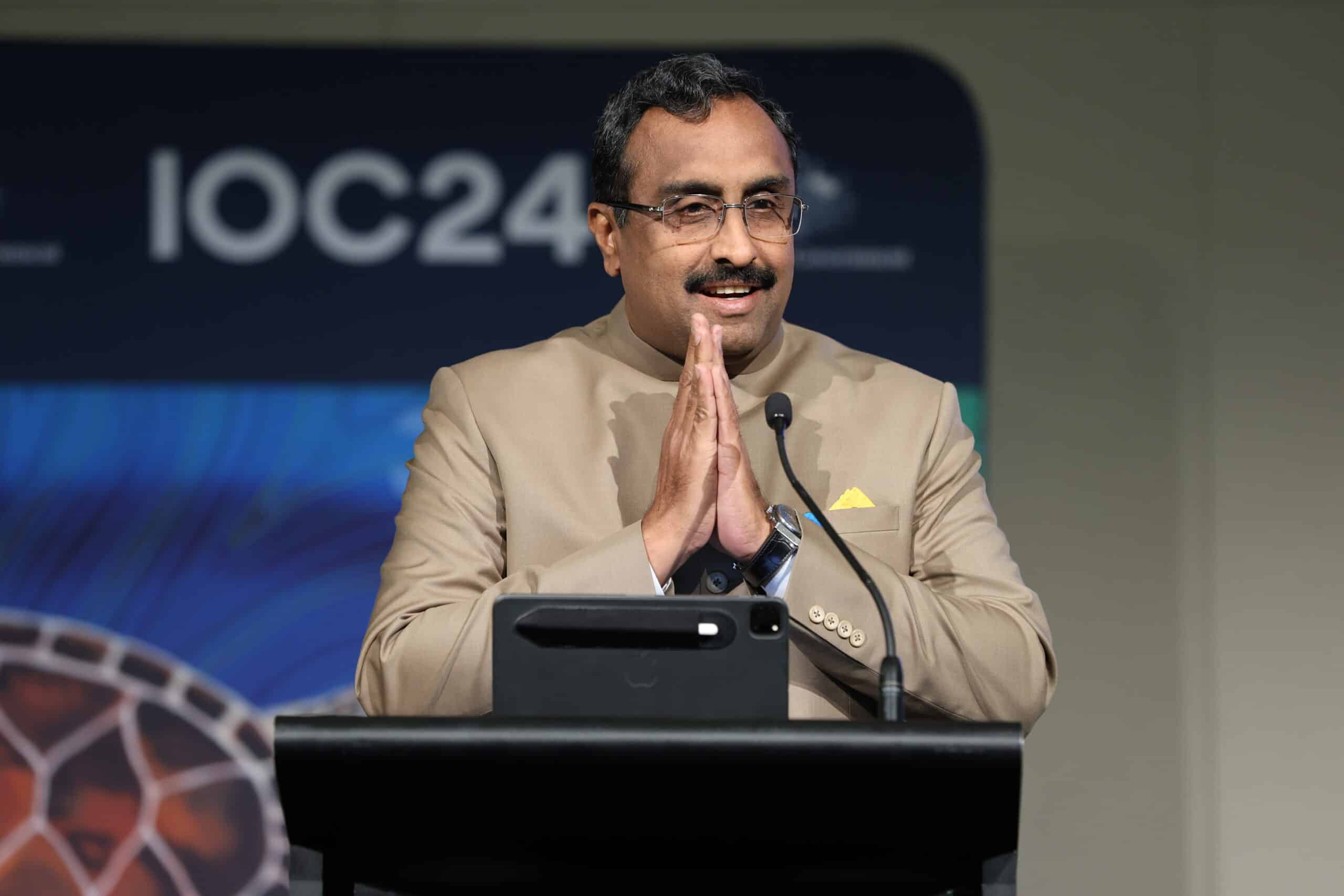
|
Getting your Trinity Audio player ready...
|
Text of Shri Ram Madhav’s address at a Webinar on “Role of Public Diplomacy during and After COVID-19” organised by India Foundation’s Center for Soft Power in association with Indian Chamber of Commerce (ICC) on May 22, 2020
My greetings and Namaskars to all the distinguished friends present in this webinar.
Public diplomacy has always been about ‘nation branding’. Countries turn to non-official channels to create a positive image for themselves in the world. We in India have also been engaged in public diplomacy activity for close to two decades now.
While the diplomatic corps is the primary channel of nation-branding, countries have increasingly realised the power of non-state actors in making or breaking the image of a nation. In the last few decades the role of non-state actors in global affairs has increased tremendously.
In a sense we are living in a world of heteropolarity. Multinational corporations, civil society groups, NGOs, radical and extremist groups, ethic and religious organisations – the list of these actors has grown exponentially.
All of the have become critical players in the world. It is important to realise that their influence defies national and sovereign boundaries.
Technology has added a new dimension to heteropolarity. The social media explosion that has taken place in last 2-3 decades has completely changed the way we deal with the rest of the world. Communication has become easier, simpler and cheaper. It has become more interactive. And most importantly it has become youth-centric.
In a way we are living in the era of the “tyranny of realtime”. For the spokespersons, whether they are officials or public intellectuals, it is a big challenge as the information dissemination is extremely faster and much more impactful than anyone could imagined. Not just information, but disinformation also travels very fast.
Ancient satirist Jonathan Swift is more relevant today than ever before when he said that “A lie can travel halfway around the world while the truth is still putting on its shoes”.
India is also a victim of this ‘tyranny of realtime’. The propaganda of a non-existent ‘Islamophobia’ in India is a case in challenges for public diplomacy practitioners.
It is this changed scenario that we are talking about the public diplomacy today.
Over the years, public diplomacy has been institutionalised. We today have think tanks, cultural centres and publications like coffee-table books to help countries brand themselves. China has its Confucius institutes, France has Alliance Francaise, India has its ICCR centres.. Germany, USA.. all have their public diplomacy institutions.
Trade bodies like ICC, CII, FICCI also play an important role in it so are multinational corporations. The role that Facebook of USA and Alibaba of China play in image building of their respective nations can’t be understated.
Of late, India has encouraged a new public diplomacy dimension – diaspora diplomacy. Indian diaspora is increasingly playing a role in shaping country’s image globally.
Friends! All these are tools. But what is equally important is the content. That brings us to the critical question of the Covid and its fallout.
Post-Covid world order is going to be different from the one we are living in today. Countries are likely to turn more inwards, and attempt at more self-reliance and less dependence on the world outside. We already see the rise in authoritarianism in various forms in different countries. There is a buzz about New Cold War. Interconnectedness, interdependence and cooperative development are all facing a challenge.
In such a scenario, global agenda too will undergo a change. Instead of security, trade and commerce, new agenda items like climate change, healthcare and high technology like artificial intelligence will dominate the new world order.
It calls for a redefined role for public diplomacy. Institutions involved in this activity have a two-pronged challenge – one, to equip to cope with the new heteropolar world by turning to new tools of diplomacy including the new media; and two – to reinvent themselves to cater to a new global agenda.
Public diplomacy thus far has been cantered around power discourse. We interpreted nations in terms of soft power and hard power. We can not forget the fact that with all our power discourse we failed to produce one great social and political philosopher of the ranks of a Marx or a Kant in last 50 years.
It is time for us to shift to values-centric and human-centric discourse. “Human-centric” is the keyword.
Chanakya, the ancient law-giver of India was one of the oldest to highlight the role of public diplomacy in statecraft. He used to say that nations should learn to “listen” in order to succeed in public diplomacy and nation-branding.
Public diplomacy institutions have to become listening posts besides being transmitters for nations. That calls for greater engagement with other countries at the level of scholars, public intellectuals and institutions.
We should talk more, but also listen the most.
Thank you.



